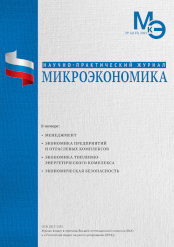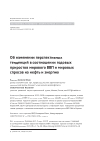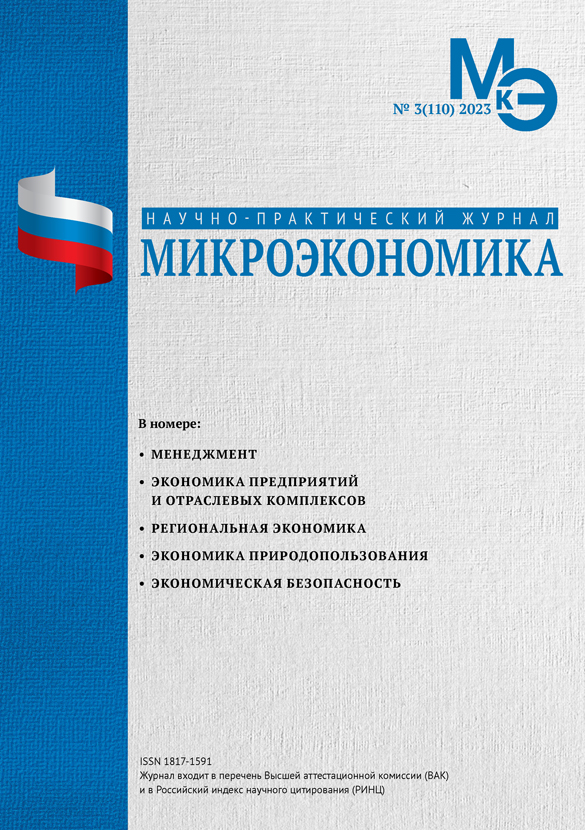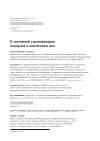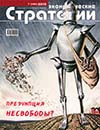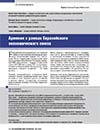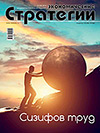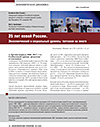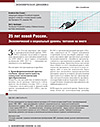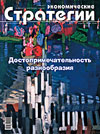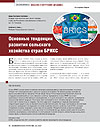DOI: 10.33917/es-3.189.2023.6-15
Key parameters of attacks directions on the Russian economy and forecasts of the expected results, which previously have inspired confidence in Western states that political regime would inevitability fall, which stimulated the US and EU sanctions activity, were developed by a number of authoritative Western expert structures. Western strategies for collapsing the Russian economy in 2022–2023 with the help of sanctions, formed on the basis of these forecasts, did not bring the desired result. At the same time, alternative forecasts of a group of Russian scientists from the CEMI RAS and their Chinese colleagues on stability of the economies of Russia and China in the event of a friendly policy in the context of trade wars with the US and the EU, made in 2019, were fully confirmed. At the core of these forecasts there are analytical tools based on agent modeling.
References:
1. Ageev A.I., Loginov E.L. Mirovoe soobshchestvo v usloviyakh sverkhkriticheskoi bifurkatsii Upravlenie slozhnymi organizatsionnymi i tekhnicheskimi sistemami v usloviyakh sverkhkriticheskikh situatsii: Materialy mezhdunarodnoi nauchno-prakticheskoi konferentsii [World Community in Conditions of Supercritical Bifurcation: Management of Complex Organizational and Technical Systems in Conditions of Supercritical Situations: Proceedings of the international scientific and practical conference]. Moscow, INES, 2022, pp. 9–12.
2. Ageev A.I., Loginov E.L. Novaya bol’shaya voina: khroniki khorosho zabytogo budushchego [New Large-Scale War: Chronicles of Well Forgotten Future]. Ekonomicheskie strategii, 2014, vol. 16, no 6–7(122–123), pp. 16–33.
3. Makarov V.L., Vu Ts., Vu Z., Khabriev B.R., Bakhtizin A.R. Mirovye torgovye voiny: stsenarnye raschety posledstvii [World Trade Wars: Scenario Calculations of Consequences]. Vestnik Rossiiskoi akademii nauk, 2020, vol. 90, no 2, pp. 169–179.
4. Makarov V.L., Vu Ts., Vu Z., Khabriev B.R., Bakhtizin A.R. Sovremennye instrumenty otsenki posledstvii mirovykh torgovykh voin [Modern Tools for Assessing the Effects of World Trade Wars]. Vestnik Rossiiskoi akademii nauk, 2019, vol. 89, no 7, pp. 745–754.
5. Tsigas M., McDaniel C., Schropp S., Mahlstein K. Potential economic effects of sanctions on Russia: An Allied trade embargo. Voxeu.org, 2022, available at: https://voxeu.org/article/potential-economic-effects-allied-trade-embargo-russia.
6. Mahlstein K., McDaniel C., Schropp S., Tsigas M. Estimating the economic effects of sanctions on Russia: An Allied trade embargo. The World Economy, 2022, no 45, pp. 3344–3383, available at: https://doi.org/10.1111/twec.13311.
7. Bryan R., Johnson G., Sytsma T., Priebe M. Does the U.S. Economy Benefit from U.S. Alliances and Forward Military Presence? Santa Monica, CA: RAND Corporation, 2022, available at: https://www.rand.org/pubs/research_reports/RRA739-5.
8. Bolhuis A. Marijn, Jiaqian Chen, Benjamin Kett. Fragmentation in Global Trade: Accounting for Commodities. IMF Working Paper. 2023. No. WP 23/73.








